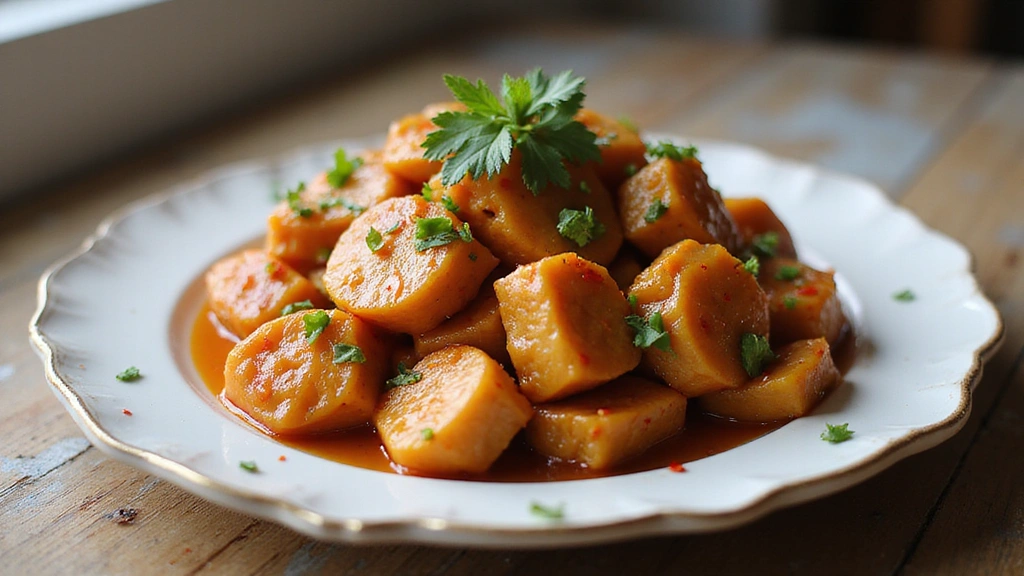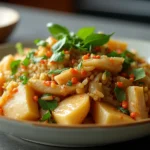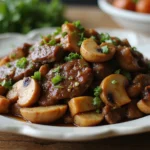Sweet and Sour Chicken is a delightful fusion of flavors that captivates the taste buds with its vibrant tang and sweetness.
The contrast between the crispy chicken and the glossy, flavorful sauce creates an irresistible dish that appeals to both young and old alike.
I have fond memories of enjoying this dish at local Chinese restaurants, where the aroma would fill the air and make my mouth water in anticipation.
Perfect for a quick weeknight dinner or a special occasion, this recipe is both straightforward and satisfying, ensuring that you can bring a taste of China to your kitchen in no time.
The History and Cultural Significance
• Sweet and Sour Chicken traces its origins to the Guangdong province of China, where the combination of sweet and tangy flavors has been enjoyed for centuries.
• The dish evolved over decades as it adapted to Western tastes, particularly in the United States, where it became a staple in Chinese-American cuisine.
• In Chinese culture, sweet and sour dishes are often served during celebrations and family gatherings, symbolizing harmony and balance in life.
• While many variations exist across different regions, the authentic version maintains a delightful balance of flavor and texture that sets it apart from imitations.
Recipe Overview
Nutritional Information (per serving)
Ingredients
Essential Equipment Guide
Wok: A wok is crucial for achieving the high heat needed for stir-frying, allowing the chicken to become crisp while retaining moisture. Look for a well-seasoned carbon steel wok for the best results.
Chef’s Knife: A sharp chef’s knife is essential for slicing chicken and vegetables with precision. A good knife will make the preparation process quicker and safer.
Mixing Bowls: Mixing bowls are important for combining the sauce ingredients smoothly. Opt for glass or stainless steel bowls for durability and ease of cleaning.
Preparation Methods
Coating the Chicken: Dredging the chicken in cornstarch before frying creates a crispy exterior while keeping the meat juicy inside. Ensure even coating for consistent texture and frying results.
Stir-Frying: This technique involves cooking ingredients quickly over high heat, which retains their color and crunch. Keep the ingredients moving in the wok to prevent burning and ensure even cooking.
Making the Sauce: Combining the sauce ingredients in a bowl before adding them to the pan allows for a smooth blend of flavors. Taste the sauce before adding it to adjust sweetness or acidity to your preference.
Step 1: Prepare Ingredients
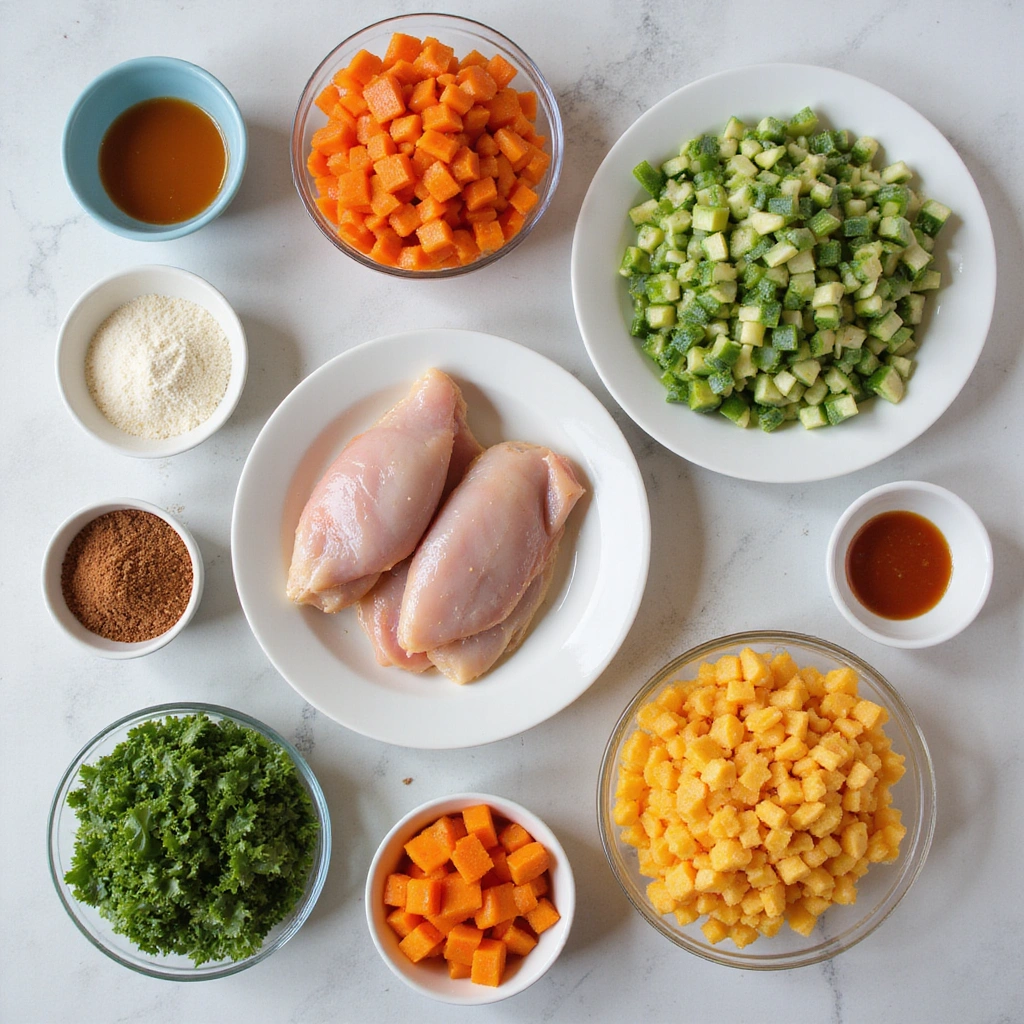
Start by gathering all your ingredients on the countertop.
This includes the chicken, vegetables, and sauce components.
Chop the chicken into bite-sized pieces and slice the vegetables into uniform sizes for even cooking.
Having everything prepped in advance makes the cooking process smoother and faster.
Step 2: Coat the Chicken
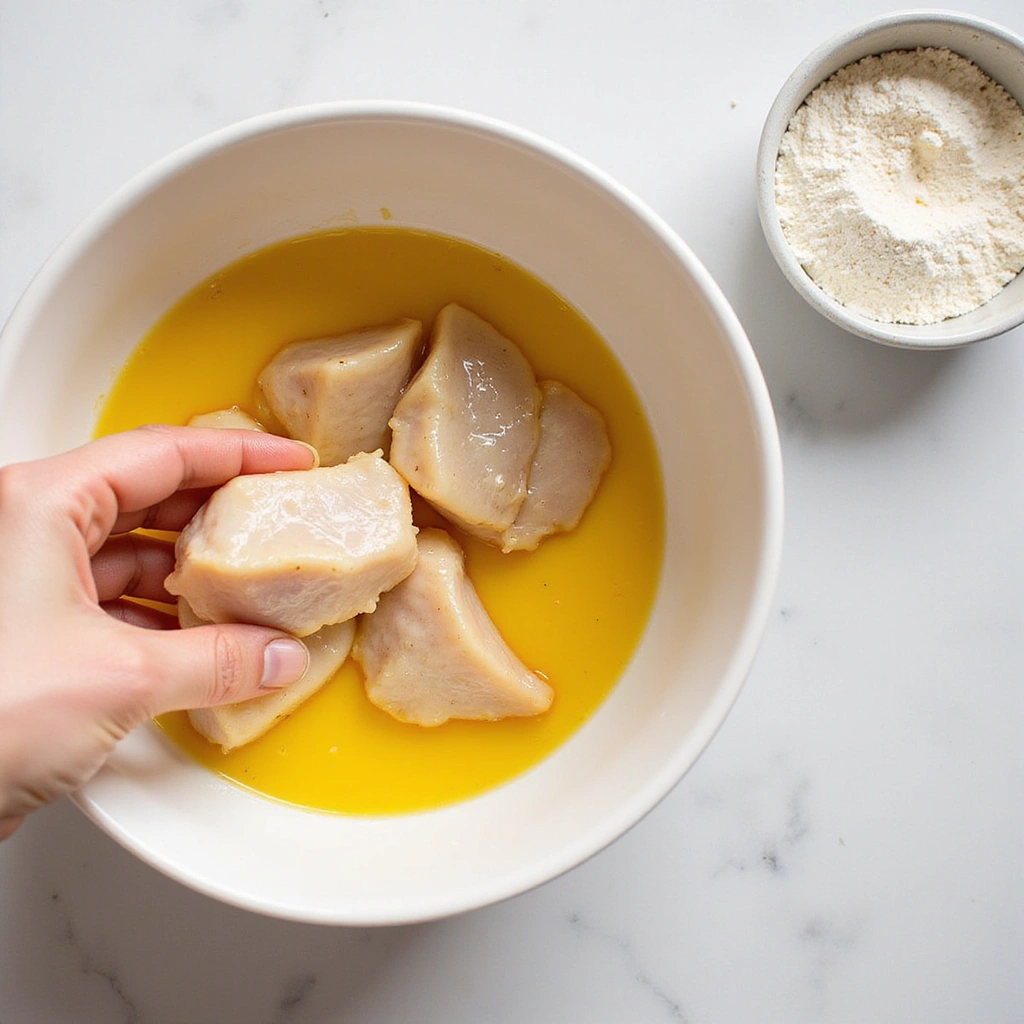
In a mixing bowl, combine the beaten egg with the chicken pieces.
Then, dredge each piece in cornstarch until well-coated.
This step is crucial for achieving a crispy texture when the chicken is fried.
Ensure you shake off any excess cornstarch to prevent clumping during frying.
Step 3: Heat the Wok

Place your wok over high heat and add oil until it shimmers.
This indicates that the oil is hot enough for frying the chicken.
Using a wok allows for even heat distribution and quick cooking, crucial for stir-frying.
Make sure to use a high smoke point oil, such as vegetable or peanut oil, to avoid burning.
Step 4: Fry the Chicken
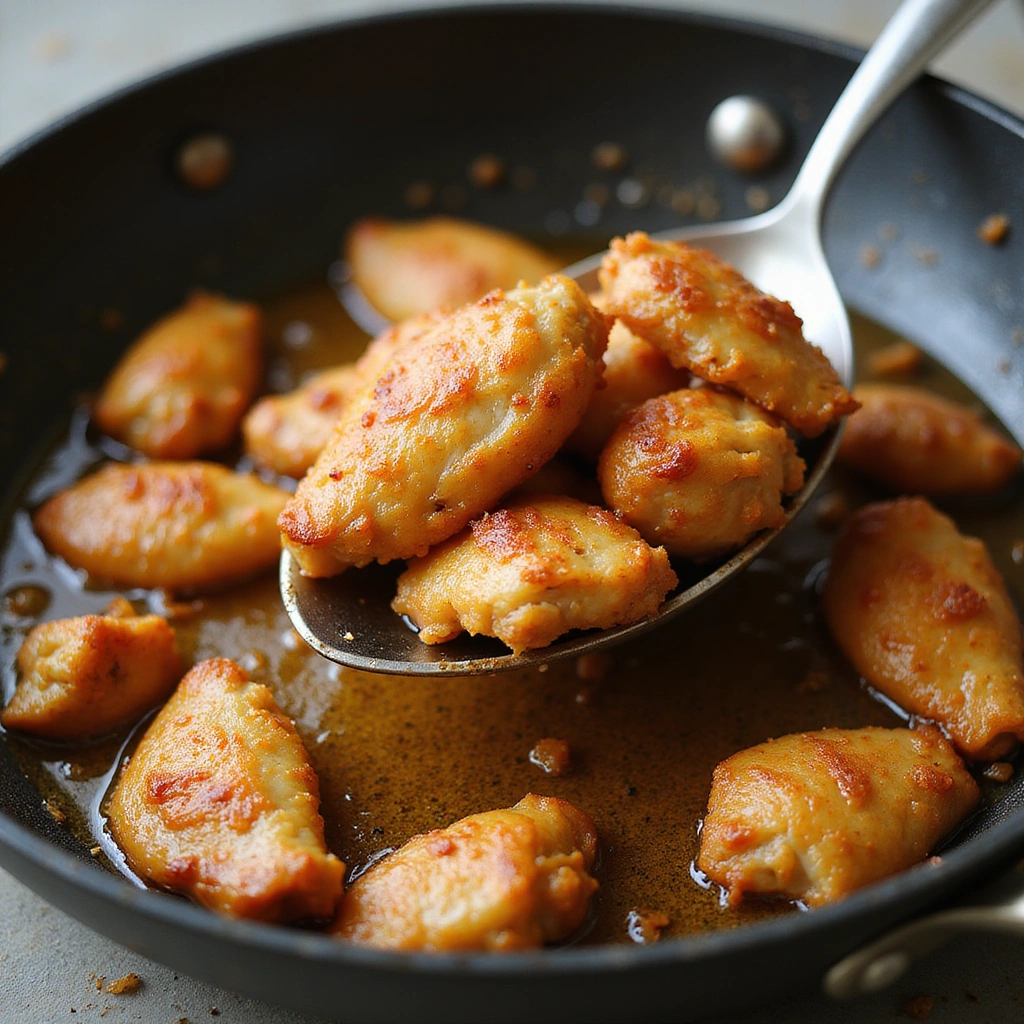
Carefully add the coated chicken pieces into the hot oil in batches.
Fry them until they turn golden brown and crispy, which should take about 4-5 minutes.
Avoid overcrowding the wok, as this can lower the oil temperature and make the chicken soggy.
Once cooked, remove the chicken and place it on paper towels to drain excess oil.
Step 5: Sauté Vegetables
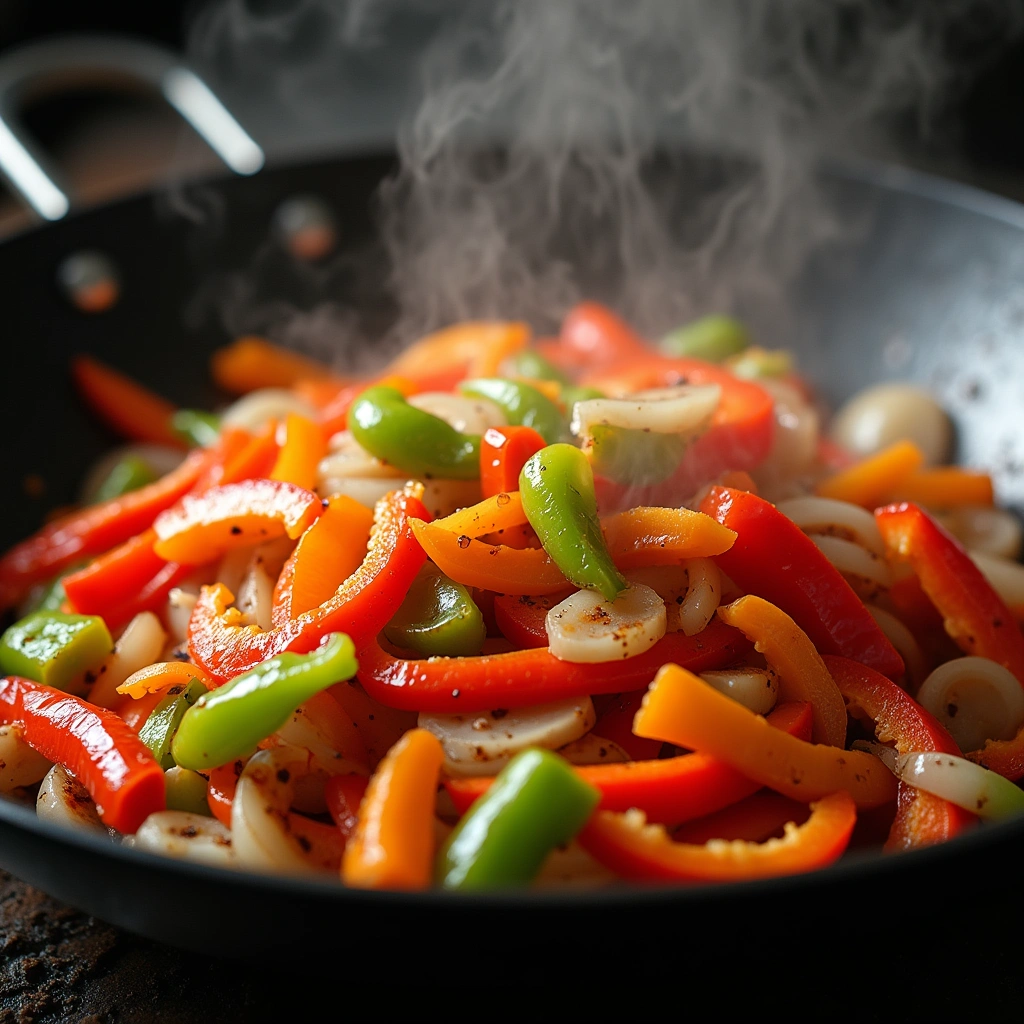
In the same wok, add the sliced onions and bell peppers, stirring for about 2 minutes.
This helps to maintain their crunch while enhancing their flavors.
Keep the heat high and stir constantly to prevent burning.
Look for the vegetables to soften slightly but still retain their vibrant colors.
Step 6: Mix the Sauce
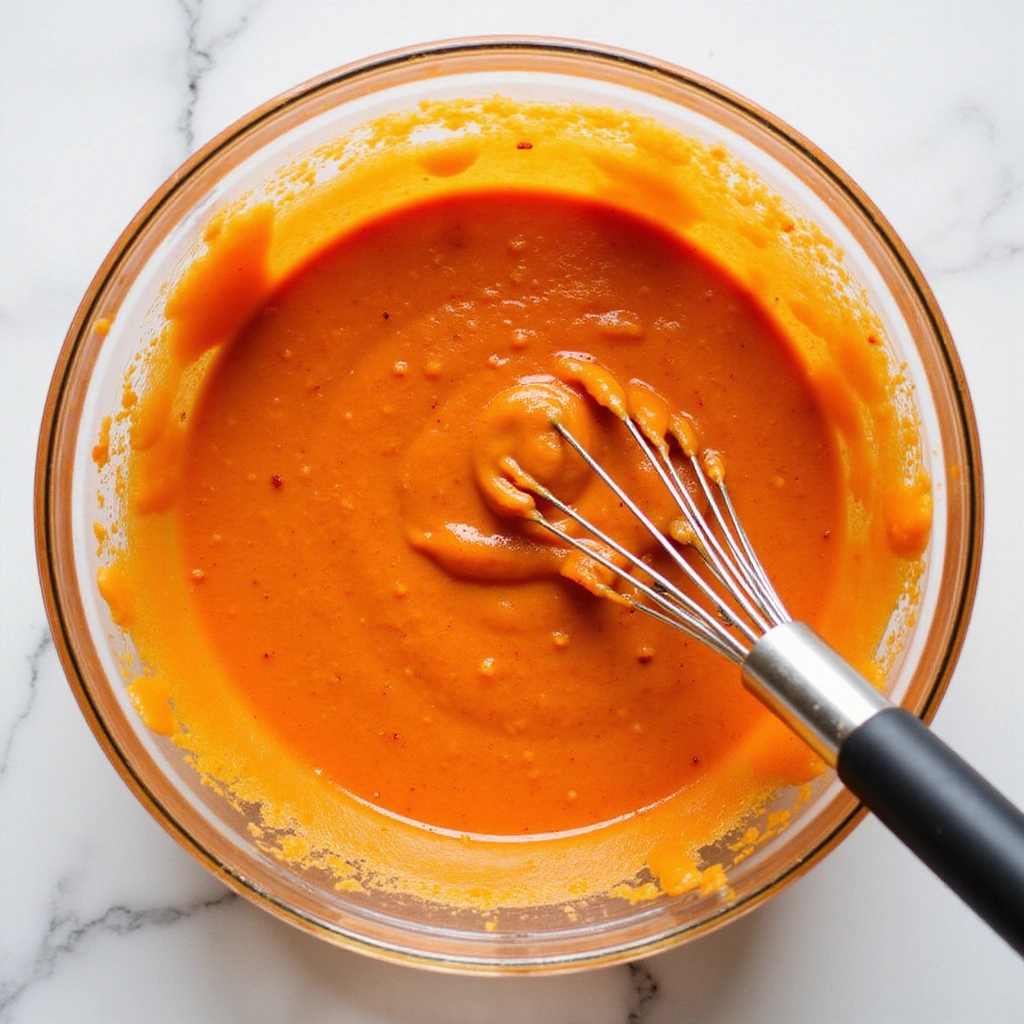
In a bowl, combine pineapple juice, vinegar, ketchup, sugar, and soy sauce.
Whisk until well blended, ensuring the sugar is fully dissolved.
This mixture will become the sauce that coats the chicken and vegetables.
Taste the sauce for balance and adjust sweetness or acidity as desired.
Step 7: Combine Chicken and Sauce
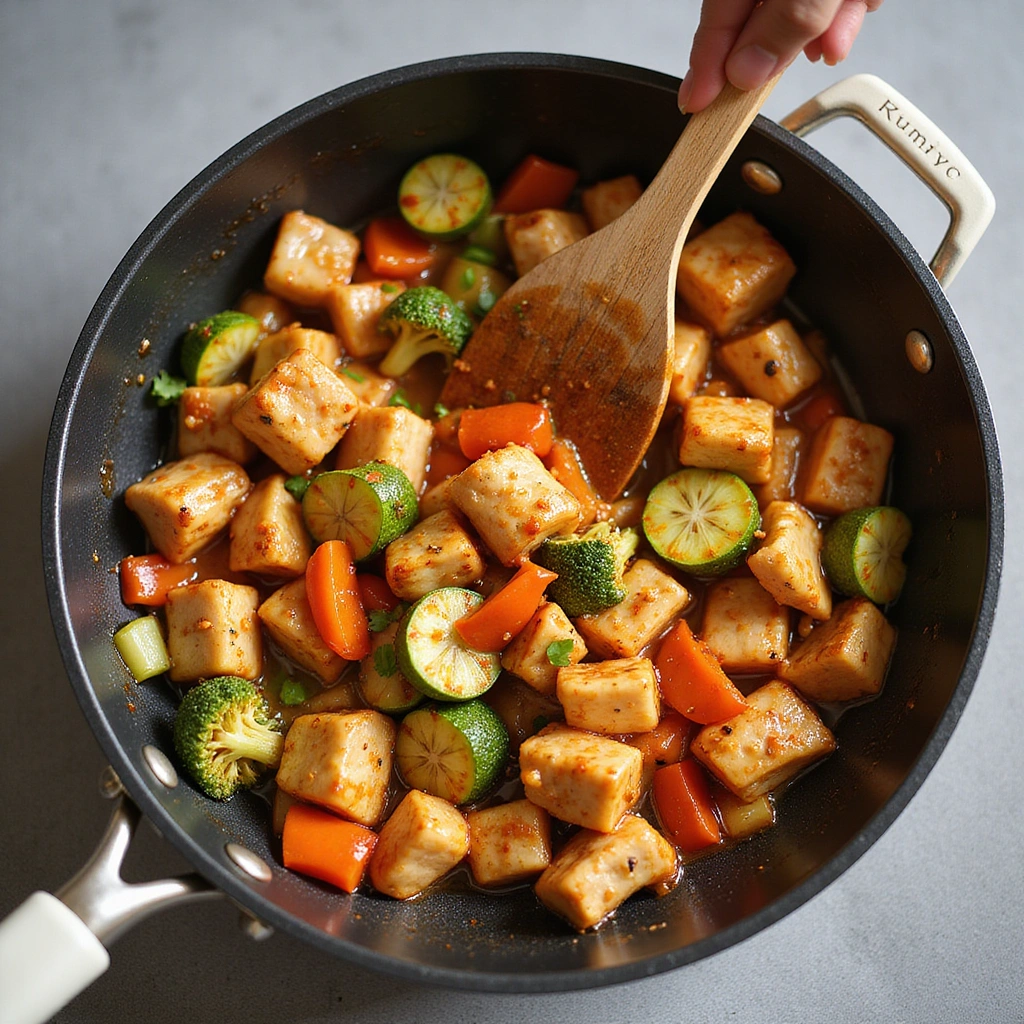
Once the vegetables are sautéed, return the fried chicken to the wok.
Pour the prepared sauce over the chicken and vegetables, stirring to coat everything evenly.
Cook for an additional 2-3 minutes until the sauce thickens slightly and everything is heated through.
Look for a glossy finish on the chicken and vegetables to indicate proper coating.
Step 8: Serve and Garnish
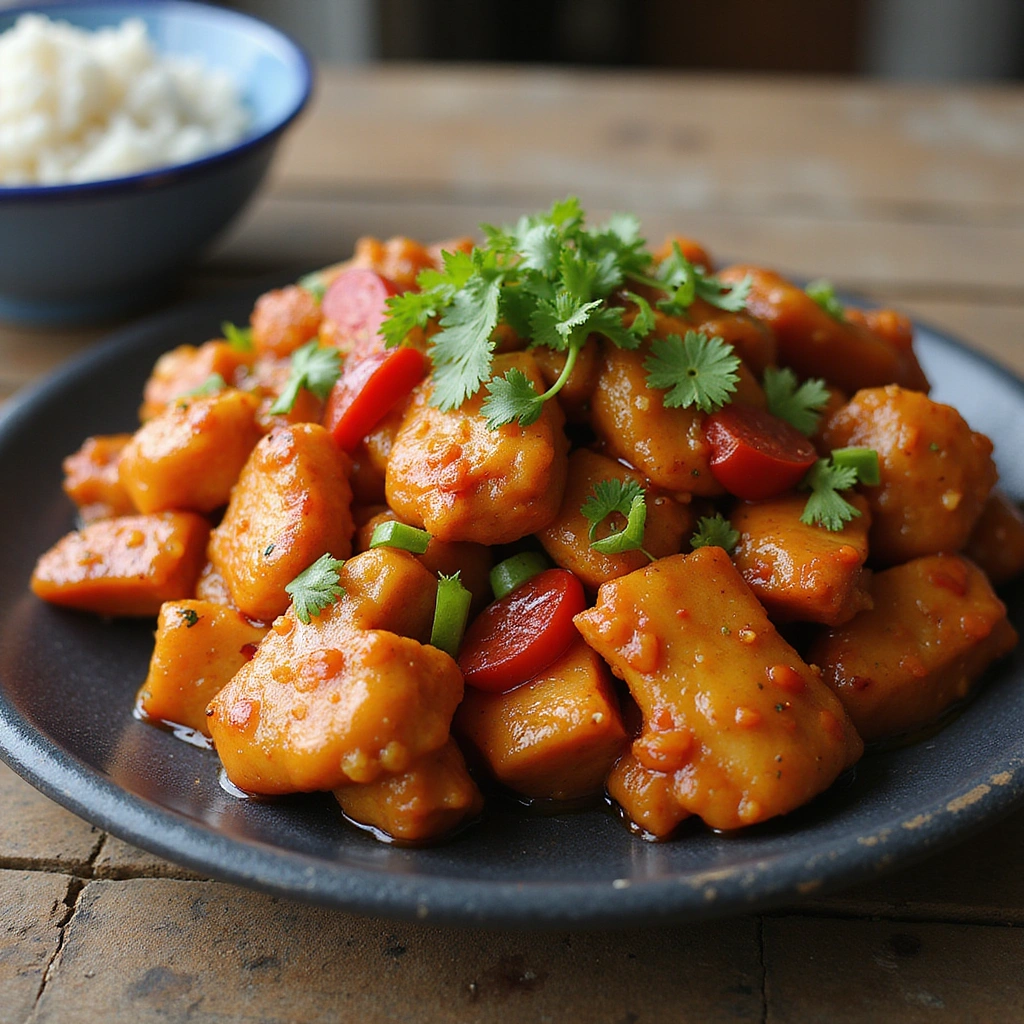
Transfer the Sweet and Sour Chicken to a serving platter.
Garnish with fresh herbs or sesame seeds for added flavor and presentation.
Serve immediately with steamed rice or noodles to soak up the delicious sauce.
Enjoy the colorful presentation and enticing aroma as you serve this dish.
Critical Timing and Temperature Guide
Frying Chicken: Fry the chicken for 4-5 minutes until golden brown at 350°F. Look for a crispy exterior and ensure the chicken is cooked through. Avoid overcrowding the pan to maintain oil temperature.
Sautéing Vegetables: Sauté the vegetables for about 2 minutes over high heat. They should be tender yet still crisp. Be cautious not to burn them by stirring continuously.
Thickening the Sauce: Allow the sauce to simmer for 2-3 minutes after adding it to the wok. It should thicken slightly and coat the chicken evenly. Adjust the heat as necessary to prevent burning.
Pro Tips for Sweet And Sour Chicken Chinese Recipe Quick And Delicious
• Ingredient Selection: Choosing fresh chicken breast and high-quality soy sauce can dramatically elevate the flavor of the dish.
• Preparation Secret: Allowing the coated chicken to rest for 10 minutes before frying helps create a crispier texture during cooking.
• Temperature Management: Ensure your oil is hot enough before adding chicken; a temperature of about 350°F is ideal for frying.
• Texture Enhancement: Frying in batches keeps the oil temperature consistent, resulting in perfectly crispy chicken pieces.
• Flavor Layering: Adding a splash of lime juice at the end enhances the overall flavor profile with a fresh, zesty note.
• Make-Ahead Strategies: You can prepare the sauce in advance and store it in the refrigerator for up to a week without losing flavor.
• Restaurant-Quality Finishing Touches: A sprinkle of sesame seeds and chopped scallions as a garnish adds a professional finishing touch to the dish.
• Equipment Optimization: Using a heavy-bottomed wok ensures even heat distribution, which is crucial for achieving the perfect fry.
Troubleshooting Common Issues
• Chicken Not Crispy: This can happen if the oil temperature is too low or if the chicken pieces are overcrowded in the wok. Ensure the oil is hot enough before frying and work in batches.
• Sauce Too Thin: If the sauce doesn’t thicken as expected, let it simmer a bit longer. You can also mix a cornstarch slurry and add it to the sauce to thicken it quickly.
• Flavors Unbalanced: Taste the sauce before serving. If it’s too sweet, add a splash of vinegar; if too sour, add a bit more sugar to balance it out.
• Vegetables Overcooked: If your vegetables are mushy, they were likely cooked too long. Sauté them just until they are crisp-tender.
• Too Much Sauce: If the dish is swimming in sauce, reduce the amount you add or increase the chicken and vegetables to balance it out.
• Leftovers Losing Flavor: To maintain flavor, store leftovers in an airtight container and reheat gently on the stovetop with a little added water.
Variations and Regional Differences
• Hunan Style: This version is spicier, incorporating dried red chilies and a touch of chili paste for heat, reflecting the bold flavors of Hunan cuisine.
• Cantonese Style: This variation uses a sweeter sauce with more pineapple and often includes bell peppers and onions for a colorful presentation.
• Vegetarian Version: Substitute chicken with tofu or seitan, maintaining the same cooking method and sauce, ideal for plant-based diets.
• Modern Interpretations: Some contemporary recipes use quinoa or brown rice instead of traditional white rice, emphasizing healthier eating habits while keeping the dish’s essence.
Food Science Behind the Recipe
• Maillard Reaction: This chemical reaction occurs when proteins and sugars in the chicken are exposed to high heat, resulting in that beautiful brown crust that adds flavor and depth.
• Emulsification: The process of combining the sauce ingredients helps create a smooth, cohesive sauce that clings well to the chicken and vegetables.
• Gelatinization: When cornstarch is heated, it absorbs moisture and swells, creating a crispy coating on the chicken that enhances its texture.
Frequently Asked Questions
What’s the most common mistake people make when preparing Sweet and Sour Chicken? Overcrowding the wok during frying leads to soggy chicken. Always fry in batches to maintain crispiness.
Can I prepare components of this dish in advance? Yes, you can prepare the sauce and chop the vegetables ahead of time. Store them separately in airtight containers for freshness.
How do I adapt this recipe for dietary restrictions? Substitute chicken with tofu or tempeh for a vegetarian option and use gluten-free soy sauce for those with gluten intolerance.
What’s the best way to store and reheat leftovers? Store leftovers in an airtight container in the refrigerator for up to 3 days. Reheat gently on the stovetop with a splash of water to maintain moisture.
Can I freeze this dish? Yes, freeze the cooked chicken and sauce in an airtight container for up to 2 months. Thaw in the refrigerator before reheating on the stovetop.
What wine or beverages pair best with this dish? A light Riesling or a fruit-forward red wine complements the sweet and sour flavors perfectly.
How can I scale this recipe up for a crowd? Simply multiply the ingredients by the number of servings desired, ensuring to fry chicken in batches to maintain quality.
What side dishes complement this recipe best? Steamed jasmine rice or fried rice pairs beautifully, along with a side of spring rolls or steamed dumplings for a complete meal.
How do professional chefs elevate this dish for restaurant service? They may use higher-end ingredients, incorporate seasonal vegetables, and focus on presentation, often garnishing with fresh herbs and sesame seeds.
Serving and Presentation Guide
• Traditional Presentation: Serve Sweet and Sour Chicken in a large bowl with a sprinkle of sesame seeds and fresh scallions on top for a classic look.
• Modern Plating Ideas: For a contemporary twist, serve on a rectangular plate with a drizzle of sauce artistically arranged around the chicken and vegetables.
• Accompaniment Suggestions: Pair with steamed jasmine rice, fresh spring rolls, or a light Asian slaw to enhance the meal.
• Special Occasion Presentation: For festive occasions, serve individual portions in small bowls garnished with edible flowers and microgreens for an elegant touch.
Conclusion
I hope you try this Sweet and Sour Chicken recipe and enjoy the burst of flavors it brings.
It’s a wonderful way to experience a beloved dish right from your kitchen.
With its combination of sweet, sour, and savory, it’s sure to become a family favorite.

